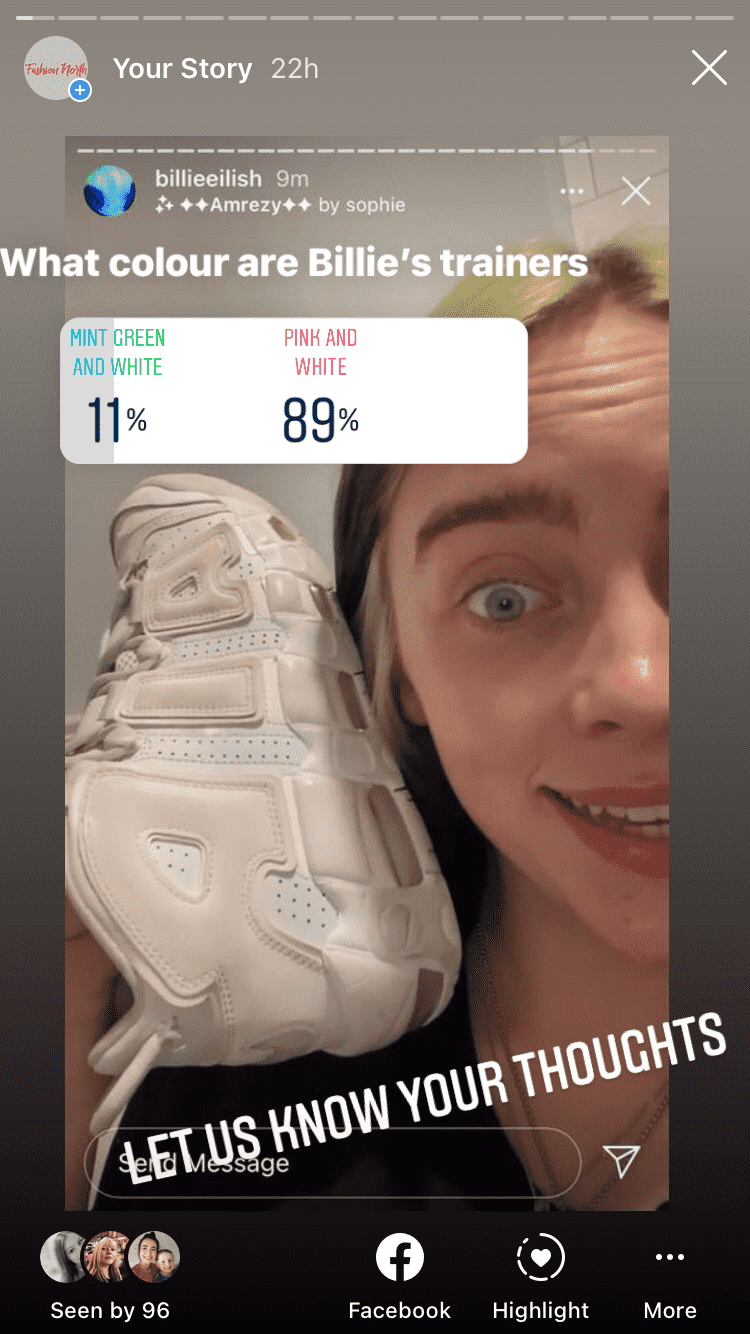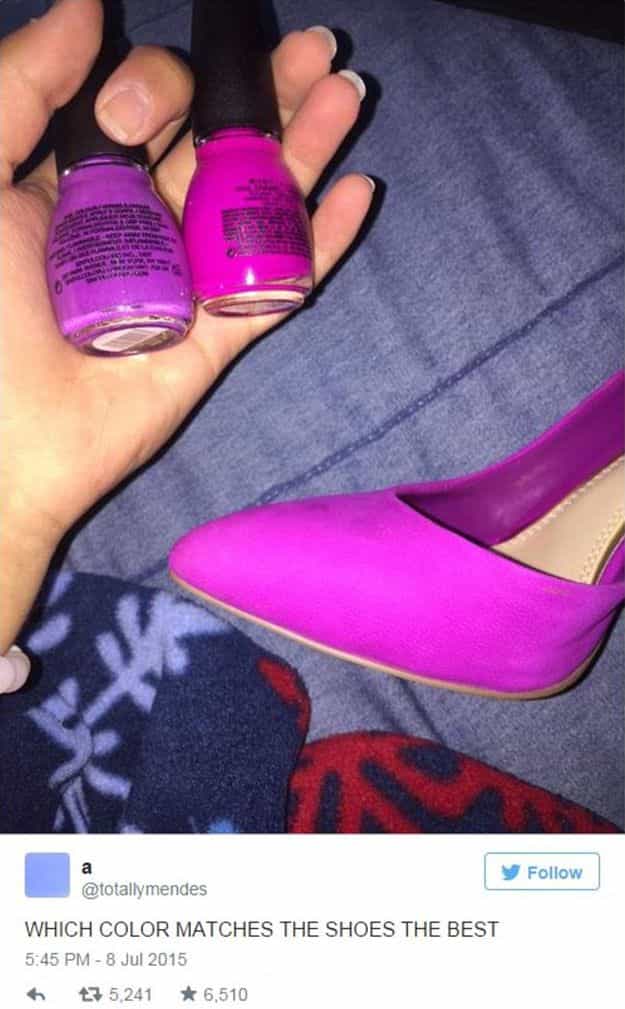Billie Eilish’s trainers leave fans divided as no one can agree on their colour.
When Billie Eilish uploaded this image to her Instagram story, it sparked another social media optical illusion debate as no one could decide if the singers new Nike trainers were pink and white, or mint green and white.

Photo credit: Cosmopolitan.com

Photo credit: Cosmopolitan.com
We asked over on our Instagram @Fashion_north what colour you all could see and 89% of you said pink and white.

This optical illusion was giving us major flashbacks to that 2015 dress.
You know the one we’re talking about, the black and blue/ white and gold one.

Photo credit: pinterest.com
Here are some other optical illusions you may remember:

Photo credit: Pinterest.com

Photo credit: pinterest.com
But why is it that we see these images differently?
We spoke to Tim Harwood, Optometrist and Owner of OP & Tom opticians in Newcastle, about the science behind optical illusions.
So, what are optical illusions and how do they work?
“Optical illusions are basically constructs which trick your brain into seeing something that is not an accurate representation of reality” says Tim.
“When you are looking at something you are effectively just seeing wavelengths of light entering the eye. The brain processes this information into an image in about one tenth of a second. As you can imagine with such an incredible amount of information to process, the brain looks for short cuts (ways to make things easier) when forming an image.
“Another way of putting it is that it will ‘fill in the blanks’ with what it thinks is going to be there to save time, rather than what actually is there.
“Optical illusions use this premise to fool the eye into constructing an image that isn’t wholly accurate.”
But why does this mean two people can see the same thing differently?
Tim explains: “Different people’s brains will ‘fill in the gaps’ in a way that is unique to them based on their past experiences of the visual world.”
In terms of the optical illusions mentioned in this article it’s the colour of certain objects that leaves the brain tricked, but how is it we can look at the same image and see different colours?
Tim goes on to say: “The perception of colour takes place in the Macula which is the central part of the Retina at the back of the eye.
“The cells/receptors that are responsible for colour detection are called cones and they are classified according to the wavelengths of colours that they pick up.
“The three types of cone cells relate to the colours red, green and blue. These 3 cones can make up the entire range of colours in the spectrum depending on the percentage of each cell that is stimulated.
“The natural physiology of the eye will differ between people and this will be manifested in both the amount and efficiency of the cones cells in the Macula. This in itself will mean peoples perception of colour will differ.
“Whilst it is possible for people to not perceive any colour at all, so called Achromatopsia, this is very rare. It occurs when people have non-functioning cone cells.
“However much more likely is colour deficiency when people have a smaller number or poorly functioning cone cell. The most likely cones to be affected are the cones which code for red and green. These people are not colour blind it is just that they will see colours differently and also find it difficult to distinguish between colours, having a much more profound effect on their vision.
“This is very common in boys – about 1 in 10 will have some degree of colour deficiency. There is no treatment and it generally has very little impact on their lives. Occasionally girls have colour deficiency, but the prevalence is much lower – around 1 in 200.”
So, all in all optical illusions trick our brain and we each work out what we see based off our own visual experiences.
As for seeing different colours we all have cone cells that process the colours we see differently, explaining why no one can agree on the colour of those trainers or that dress but why no one is scientifically wrong for what they are seeing, it’s just the way our individual eyes work.
To find out more about Tim and OP & Tom opticians head to their website www.opandtom.co.uk or visit them at 8a High Bridge, Newcastle upon Tyne, NE1 1EN.
Send us your favourite optical illusions @fashion_north on Instagram.
